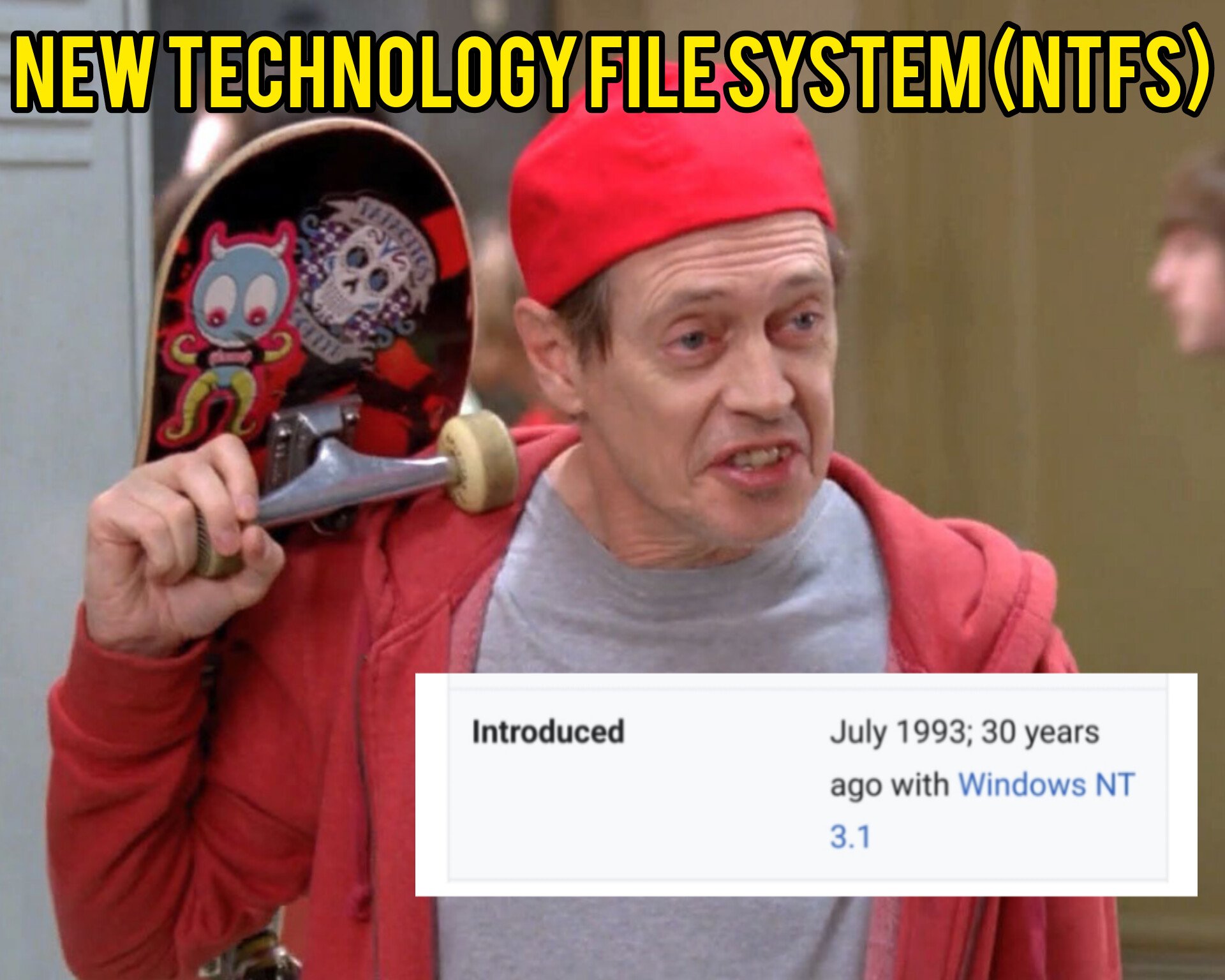this post was submitted on 28 Jul 2023
63 points (93.2% liked)
Memes
45180 readers
1463 users here now
Rules:
- Be civil and nice.
- Try not to excessively repost, as a rule of thumb, wait at least 2 months to do it if you have to.
founded 5 years ago
MODERATORS
you are viewing a single comment's thread
view the rest of the comments
view the rest of the comments

Haha, there's still things embedded deep in code and in CPUs that go way back to the 80s. If only y'all knew. It's all shit built on top of older shit, built on top of even older shit with kludges and hacks to glue it all together. Know why Windows has five different ways to access the same setting? Because if they get rid of the older methods, they break a ton of other shit that depends on it too. A house of cards or a Jenga tower.
A modern PC can STILL natively boot a DOS floppy from 1986 in legacy BIOS mode because of this.
Theres also examples in the corporate world where some companies are STILL running 70s mainframes, and use shiny new PCs as front end terminals that just connect to the same old backend.
The control panel peaked at windows 7 though
everything Windows peaked with Windows 7.
Imma gonna stop you there and say the peak was Windows 2000.
Seriously, each new windows update just adds a fresh new coat of paint on top, as if to make finding the actually useful win 7 and xp menus, that are still there, harder.
Linux Mint feels to me like what windows 10/11 should've been
ISA still exists on new, modern hardware.
https://www.tomshardware.com/news/isa-slot-tpm-soundblaster-header-pc
This is super interesting and I had NO IDEA! Makes me very curious how much more efficient an entire fresh start might be with new tech.
Yeah I can't even think of any recent CPUs that aren't based on previous designs. Even Apple's new M1 is an ARM derivative, which itself is based on an ancient computer from the 80s known as the "Acorn".